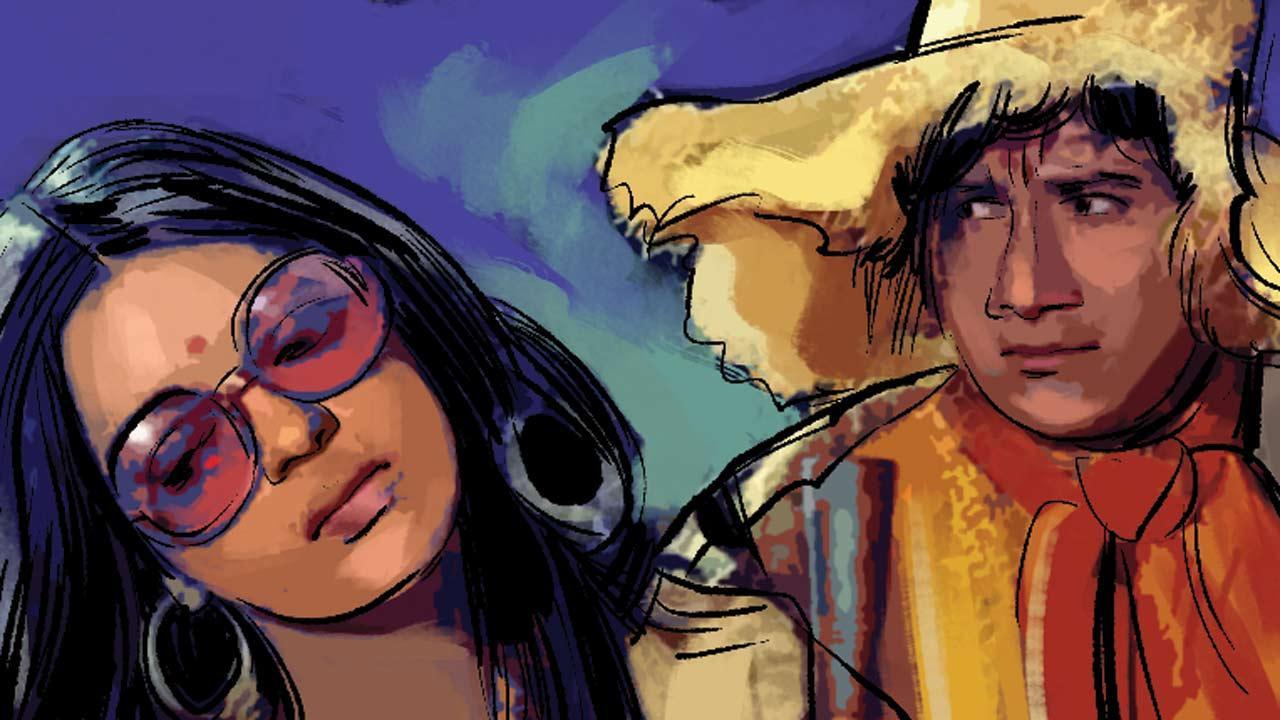I was pleased to return to Nepal—I’ve visited it a few times before. Nepal is amazingly affordable, has lovely people, a rich culture and the perfect mix, for an Indian, of familiarity and revelation

Illustration/Uday Mohite
![]() So I’m in Nepal, and the maar-dhaad Kannada film KGF Chapter 2 by Prashanth Neel, starring Yash, is making film history here. It is such a hit that, not content with back-to-back shows from 6 am-10.30pm going houseful, they have an extra show at 2 am! A local said the film was so successful that the theatres showing local Nepali films complained, and a court fined the 2 am-wallahs! I bet they’re entirely unrepentant. I’m not a fan of violent, blood-soaked films, but Neel and Yash, take a bow.
So I’m in Nepal, and the maar-dhaad Kannada film KGF Chapter 2 by Prashanth Neel, starring Yash, is making film history here. It is such a hit that, not content with back-to-back shows from 6 am-10.30pm going houseful, they have an extra show at 2 am! A local said the film was so successful that the theatres showing local Nepali films complained, and a court fined the 2 am-wallahs! I bet they’re entirely unrepentant. I’m not a fan of violent, blood-soaked films, but Neel and Yash, take a bow.
I’m in Patan, Nepal, on the invitation of Film Southasia, a biennial South Asian documentary film festival (April 21-24), that is celebrating its 25th year. It is led by founder Kanak Mani Dixit, the South Asian visionary, Festival Director Mitu Varma and Laxmi Murthy, director of the Hri Institute for South Asian Research and Exchange, a key member of the organising committee. It screened 71 documentaries (nine of which were by Nepali filmmakers) from eight South Asian nations, with panel discussions on the films, gender and caste issues, and an exhibition on sexual violence. I was a panellist for the discussion on ‘Create, Curate, Collaborate: Making and sharing art during and post-pandemic,’ along with Ujen Norbu Gurung (curator and artist), Ayisha Abraham (visual artist) and Gurpal Singh (actor, director and curator), moderated by NayanTara Gurung Kakshapati, Kathmandu-based photographer and curator.
I was pleased to return to Nepal—I’ve visited it a few times before. Nepal is amazingly affordable, has lovely people, a rich culture and the perfect mix, for an Indian, of familiarity and revelation. A room in the elegant, heritage Hotel Pahan Chhen, right on Durbar square in Patan (Lalitpur), across the palace, with traditional wooden carved doors and windows, is just over Indian Rs 2,000 a night. And a nice hotel room in Thamel, heart of Kathmandu’s tourist district is Indian R1,900 a night, practically unthinkable in big-city India.
Bollywood flows in the blood of ordinary Nepalis, just as it does in India. Dawdling back to the hotel in Patan, at midnight, I chance upon a wedding procession in full frenzy, with hip youngsters, drinks in hand, dancing in the street to Dum maro dum, to a full band with saxophones and all. It turns out the popular song from Dev Anand’s 1971 film Hare Rama Hare Krishna, starring Zeenat Aman, shot in Nepal—on how the hippie and drug culture in Nepal was destroying individuals and families—is particularly close to Nepali hearts. The film shooting had the blessings of King Mahendra himself.
At the tiny Welcome restaurant in Pokhara, the entire family that runs it—husband Raju, wife Shanta, kids Anil and Ayush and Ama (granny) Bhavani locked up the restaurant from 12-3 pm and rushed to see KGF2. It was the second time they ‘bunked’ the restaurant; earlier they had gone to see SS Rajamouli’s Telugu hit RRR. The favourite film of Anil, 13, is Naagin, the TV series on Colours TV on a vengeful, shape-shifting serpent, that he watches online—he has his own laptop. As for Ayush, 2, his favourite is the song Nacho Nacho from RRR (which also had theatre shows at midnight). Indian cinema is clearly deepening its roots overseas. Ayush won’t dance for me, though, as he’s “apna marzi ka malik,” his fond uncle Shankar explains. I leave a tip, and Raju Dai refuses, saying it’s too much. I am moved by his integrity, that too after a few hard, lean COVID years. The granny and her husband ran a restaurant in Lucknow, but he was a drunkard, and after he abandoned her for another woman, she came to live with her son Raju in Pokhara. “Achcha hua chhutkara mila aise aadmi se,” I tell her, and she heartily agrees, telling me in Nepali, grinning, that now her souten has to deal with his alcoholism. Ah, how life imitates Bollywood. Or is it vice versa?
PS: At an eshti (state transport ST bus) stand in Bombay, vendors sell sing-channa, vada pao and “coldreenk”. But at 7 am, at the Pokhara bus stand in Nepal, a street vendor offers, “Ma’am, would you like some apple strudels, cinnamon rolls or croissants?” Uff!
Meenakshi Shedde is India and South Asia Delegate to the Berlin International Film Festival, National Award-winning critic, curator to festivals worldwide and journalist.
Reach her at meenakshi.shedde@mid-day.com
 Subscribe today by clicking the link and stay updated with the latest news!" Click here!
Subscribe today by clicking the link and stay updated with the latest news!" Click here!










